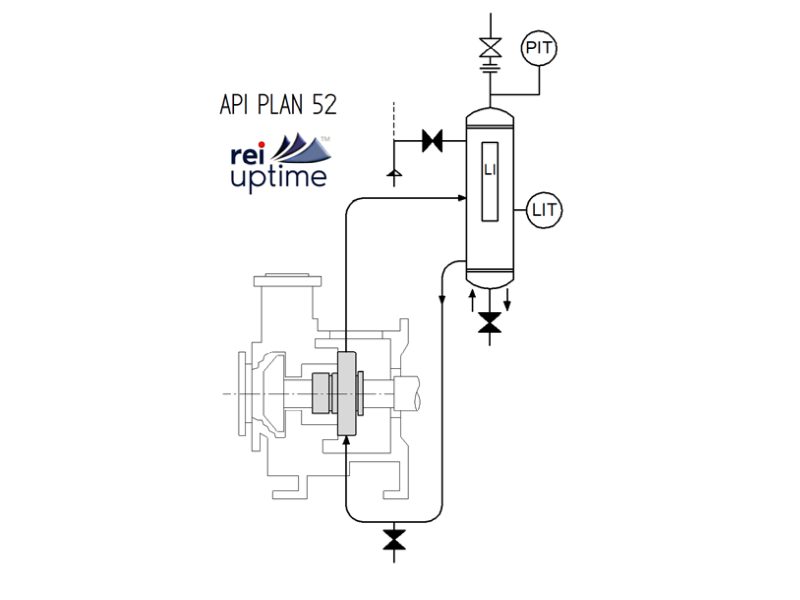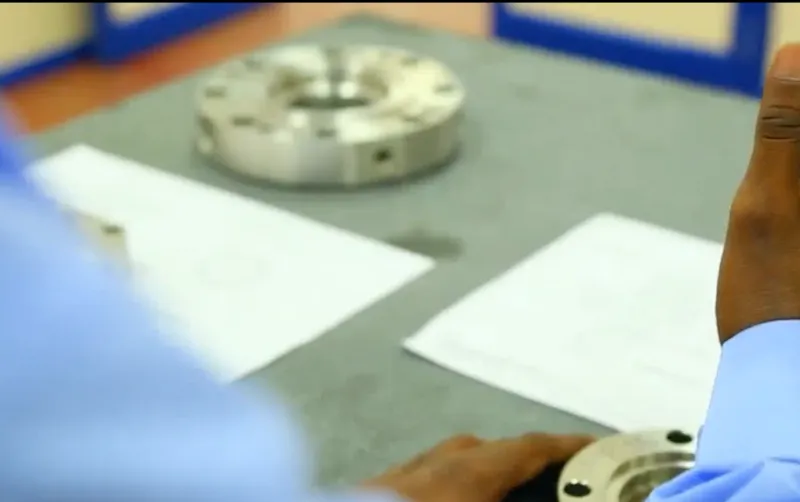August 15, 2023
Why we Must Remove Heat from Mechanical Seal Faces
Excessive heat build-up in a pair of counter-rotational mechanical seal faces will create severe process equipment reliability issues. It is simple fact; heat will impair seal longevity. This report reviews the mechanical seal life benefits when heat is removed from the mechanical seal faces.
Removing heat at the mechanical seal faces is important for many direct and in-direct reasons. Effective heat removal is essential to maintain the efficiency, reliability, and longevity of the mechanical seal and the equipment it is installed in. Understanding the effects of heat and applying solutions that remove or eliminate heat at the mechanical seal faces is therefore vital to maximising equipment reliability.
DISCUSSION:
There is a simple equation that all rotating equipment engineers need to know:
‘Cool Seal Faces = Seal Longevity’
Like all great equations, it is very simple. It will however act as the fundamental, solid foundation for your mechanical seal selection and equipment reliability uptime knowledge.
If plant engineers, purchasing officers and managers remember this simple equation and APPLY it to EVERY mechanical seal design proposal and quote BEFORE they purchase or install the mechanical seal in the rotating equipment, they WILL spend less time and cost in the future, trouble shooting problems, stripping, and rebuilding rotating equipment and loosing vital production uptime time.
Below are some key reasons why heat removal at the mechanical seal faces is beneficial for mechanical seal longevity:
Reduced Wear and Friction:
Heat generation at the seal faces can lead to increased friction and wear between the sealing surfaces. This can result in accelerated deterioration of the seal faces and reduce the overall lifespan of the mechanical seal.
Efficient heat removal helps to keep the seal faces cooler, reducing friction and wear.
Seal Face Lubrication:
Heat removal often involves the circulation of a cooling fluid, which can act as a lubricant between the seal faces. This lubrication helps to create a thin fluid film between the faces, reducing direct contact and wear. It also aids in preventing the formation of dry spots that could otherwise cause rapid wear.
The important thing to remember is ……
‘Heat removal must happen at both the Inboard and Outboard sets of Mechanical Seal Faces’
Many mechanical seal designs with so-called ‘integral pumping rings’ in-effectively circulate the cooling fluid inside the seal. As shown below in Figure 1, such seals purely circulate the cooling fluid around the outboard seal faces, leaving heat to build up at the inboard seal faces, resulting in seal face suffering and failure.

In a double mechanical seal, the primary ‘sealing action’ is done by the INBOARD seal faces. These inboard faces are the ‘first line of defence’ as they prevent the process media from escaping.
If the cooling fluid is not replaced and replenished at the inboard faces, heat will build up and the seal faces will deteriorate and eventually fail.
Unfortunately, conventional mechanical seal suppliers will have a long list of reasons why they cannot effectively replace the cooling fluid at the inboard faces. These are the same people who play basket-ball and say the “ball is too big”, or the “net is too small”.
Ask yourself…. “Would you buy a car from a car manufacturer who said …
.. we only circulate the engine cooling oil around part of the car engine.
We actively leave the other part of the engine to get hot and fail”?

Seal Performance and Leakage Control:
Heat build-up can adversely affect the sealing performance of the mechanical seal. Thermal expansion and distortion of the seal faces can lead to uneven contact at the counter-rotational / sliding sealing surfaces and hence compromise sealing efficiency. This will result in increased leakage and premature seal failure.
Effective heat removal helps maintain consistent seal face geometry, ensuring optimal sealing performance and minimizing leakage.
Heat-Induced Damage Prevention:
High temperatures can cause thermal damage to seal materials, leading to degradation, softening, or chemical reactions that compromise the seal's integrity.
The elastomers within the mechanical seal and process equipment ALL have an upper temperature limit based on their material properties. Increased heat will deteriorate the elastomer which will lead to elastomer failure.
How many times have you had to remove, repair and/or replace an entire pump because of a simple elastomer failure? … It happens ALL the time and costs an absolute fortunate in process line downtime and equipment repair costs.
It’s easy for conventional mechanical seal suppliers to blame the elastomer. However, often it is not the elastomer’s fault that it has been designed adjacent to a set of overheating mechanical seal faces where the heat is not effectively removed!
By removing excess heat, you prevent such damage and ensure that the mechanical seal continues to function as intended.
Improved Energy Efficiency:
Mechanical seals operating at elevated temperatures can contribute to energy losses due to increased friction and reduced efficiency.
You wouldn’t drive your car with the handbrake activated would you?

Operating rotating equipment with deteriorated mechanical seal faces is akin to driving a car with the handbrake on!
This is not only bad for the mechanical seal, but it is bad for the whole process equipment as it adds stresses, vibrations and problems to the whole system, including equipment bearings, oil seals and electric motors.
By maintaining cooler operating conditions through effective heat removal within the double mechanical seal, you can help improve the overall energy efficiency of the process equipment.
Process Stability and Reliability:
Heat removal contributes to the overall stability and reliability of the equipment by preventing overheating, which could lead to equipment failures, shutdowns, or process disruptions. Consistent operating temperatures enhance the reliability of the entire system.
Extended Seal Life:
Overheating can significantly reduce the lifespan of mechanical seals. By keeping the seal faces cool and minimizing wear and damage, you can extend the service life of the seals, reducing the frequency of maintenance and replacements. This will save significant costs in the future!
Safety Concerns:
In some applications, excessive heat build-up can pose safety risks, such as the potential for seal failure or leakage of hazardous materials into the operator environment.
Effective heat removal helps mitigate these health and safety risks and ensures a safer working environment.
SUMMARY:
Overall, efficient heat removal at the mechanical seal faces is crucial for maintaining optimal seal performance, preventing wear and damage, ensuring process reliability, and maximizing the lifespan of both the mechanical seal and the equipment it is installed in.
Engineers, purchasing officers and managers MUST ensure heat is removed at BOTH sets of mechanical seal faces, and specifically heat is removed at the INBOARD set of seal faces as these are the ‘work-horse’ of the mechanical seal.
It all starts by focusing on correct seal design selection at quotation stage.
Do your homework. Apply the simple equation…. And most importantly, ask yourself the question;
Does this seal design effectively remove heat at both the INBOARD and OUTBOARD mechanical seal faces?
If the answer is yes, you will ensure that you build your reliability uptime ‘building’ on a solid foundation.
FURTHER INFORMATION
Contact the technical sales team at Reliability Seals for further information or to enlist on our 'Online Reliability Uptime training program'.
"Learning is a constant process of discovery without end" - Bruce Lee (Martial artist and actor)
Suggested posts
No items found.




